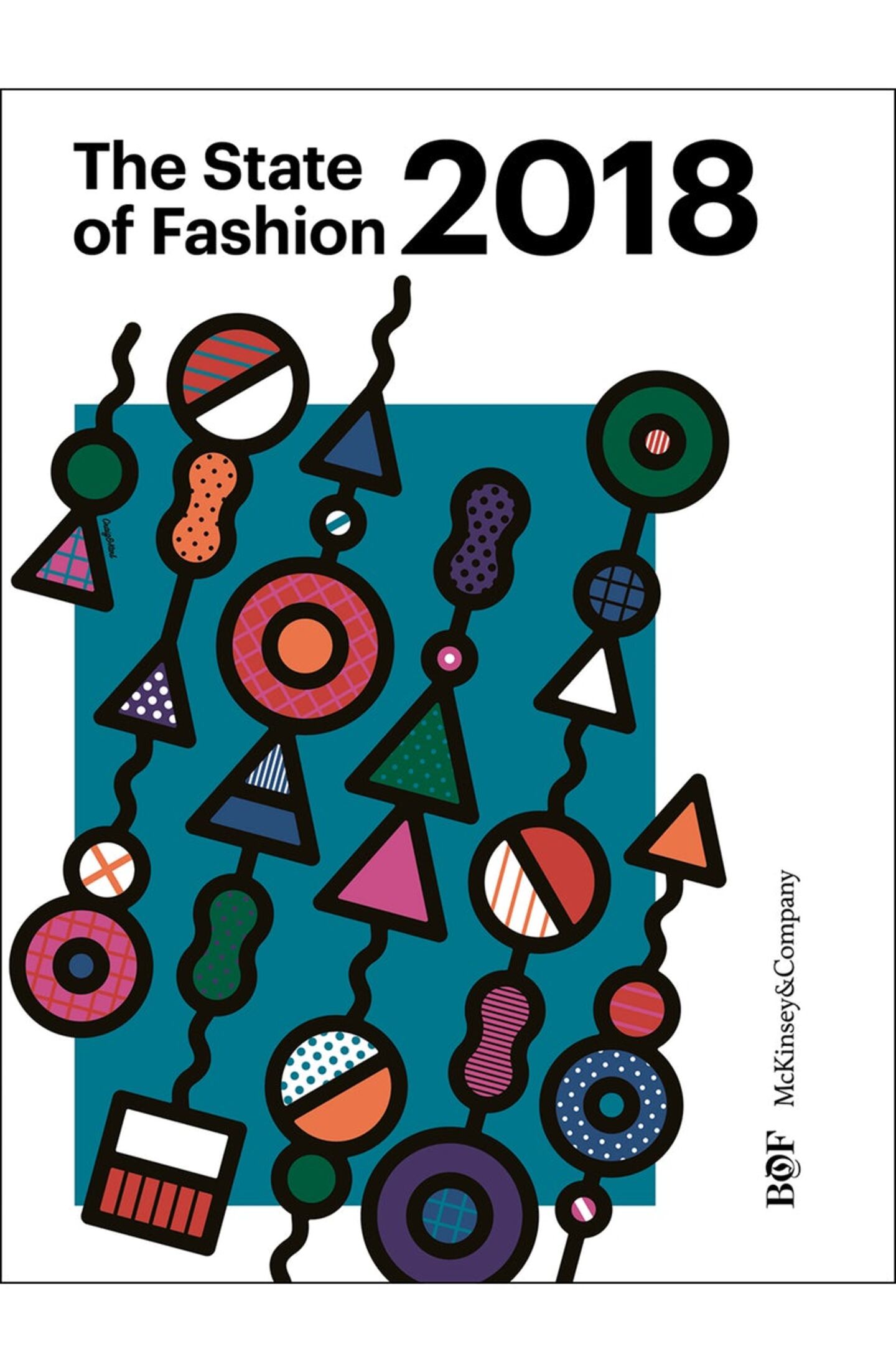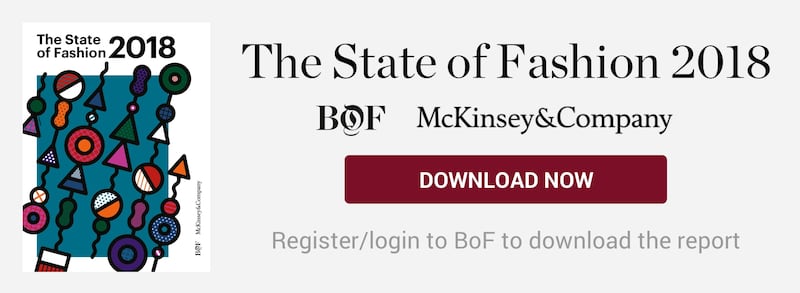
The Business of Fashion
Agenda-setting intelligence, analysis and advice for the global fashion community.

Agenda-setting intelligence, analysis and advice for the global fashion community.

The Business of Fashion and McKinsey & Company have now released The State of Fashion 2021, focusing on the themes, issues and opportunities impacting the sector. Download fashion’s most authoritative report here.
LONDON, United Kingdom — One year ago, McKinsey & Company and The Business of Fashion (BoF) set out to transform the level of debate about fashion by providing a foundation for rigorous in-depth research and analysis of the global fashion industry, focusing on the themes, issues and opportunities driving the sector and its performance.
Now, we are publishing our second annual report. Over the last months we have again put together an unrivalled global network of experts, research and analysis to bring you a report that makes sense of fashion’s myriad segments, categories and geographies. Our aim remains threefold: first, to establish a common understanding of the forces that are shaping the industry; second, to provide clarity and transparency on the industry’s performance; and third, to set the agenda for the topics that should be top of mind for business and creative leaders in 2018.
By bringing together our two organisations, we have pooled resources to draw on BoF's deep industry expertise and insider access alongside McKinsey's functional, analytical and industry insight to offer a rare blend of quantitative rigour and sharp-eyed qualitative insights about the fashion sector. This year we surveyed more than 200 senior industry executives around the world and conducted in-depth interviews with some of the most influential and forward-thinking people in the industry, including Chip Bergh, president & chief executive of Levi Strauss & Co; Richard Liu, founder and chief executive of JD.com; Tory Burch, chief executive and designer of Tory Burch; Dame Ellen MacArthur, founder of the Ellen MacArthur Foundation; Victor Luis, chief executive of Tapestry Inc; and Marco Bizzarri, chief executive of Gucci. If you're engaged in the business of fashion – in the boardroom, as an entrepreneur building a startup, or even as an informed shopper on the high street – this report will tell you what you need to know about the business trends shaping our industry's future.
ADVERTISEMENT
Looking towards 2018, there is a new sense of optimism in an industry plagued by uncertainty.
This report includes the second readout of our industry benchmark: the McKinsey Global Fashion Index (MGFI). With a database of nearly 500 fashion companies, this index will allow for analysis and comparison of how a fashion company is performing against others in its market segment and product category, and this year we have also added a regional view. Already, the data set has grown and is becoming ever-more valuable as a source of insight into both the pressures on fashion and the opportunities emerging from the world’s increasingly turbulent fashion markets.
Last year we made predictions about how the fashion world would pan out in 2017. In this report we make a new set of predictions for the year ahead rooted in the 10 trends we have identified across the global economy, consumer shifts and the fashion system, that are overarching, interconnected forces that will drive and shape the trends in years to come.
The fashion industry is turning a corner. Looking towards 2018, there is a new sense of optimism in an industry plagued by uncertainty. And while “uncertain” and “challenging” remain the most common words that executives in the BoF-McKinsey Global Fashion Survey have used to describe the state of the industry this year, right behind them in third place is “optimism.”
The McKinsey Global Fashion Index forecasts industry sales growth to nearly triple between 2016 and 2018, from 1.5 percent to between 3.5 to 4.5 percent. But the rebound is not being felt evenly across the globe. In fact, 2017 signals the end of an era. The West will no longer be the global stronghold for fashion sales. In 2018, an important tipping point will be reached when, for the first time, more than half of apparel and footwear sales will originate outside of Europe and North America, as the main sources of growth are emerging market countries across Asia-Pacific, Latin America and other regions. Not surprisingly, this is also reflected in fashion executives’ sentiments, as respondents from emerging markets are more optimistic about the industry’s outlook in 2018.
The challenges of operating in a fundamentally changing industry and an unpredictable macroeconomic environment has led fashion players to 'toughen up.'
This outlook varies across value segments too. The ongoing polarisation of the industry with consumers trading up or down from mid-market price points continues to create headwinds for mid-priced fashion players while those operating in the luxury, value and discount segments further pick up speed. What is new is that the absolute luxury segment is accelerating alongside affordable luxury.
These developments take place at the same time as the fashion industry is undergoing other transformative shifts. Alongside consumers’ adoption of digital are raised expectations of customer experience and a higher scrutiny on convenience, price, quality, newness and a personal touch. Leading players are therefore creating innovative business models, using granular customer insights as a source of differentiation and pushing the limits of their end-to-end product development process. The performance gap between frontrunners and laggards continues to widen: from 2005 to 2015 the top 20 percent of fashion companies contributed 100 percent of the economic profit, while in 2016 the top 20 percent contribution had increased to 144 percent.
The challenges of operating in a fundamentally changing industry and an unpredictable macroeconomic environment has led fashion players to “toughen up.” Industry players are coming to accept unpredictability as the new normal, and fashion executives will respond by focusing their energy on improving what is within their control. We expect to see several themes emerge as defining features of 2018, from Asian fashion players asserting their power on the global stage to personalisation at scale and cutting-edge deployment of artificial intelligence. For those leaning forward and willing to help design the new features of the modern fashion system, the opportunities at hand to truly connect with fashion consumers across the globe have never been greater.
The 10 trends that will set the agenda for the global fashion industry in 2018
ADVERTISEMENT
1. Predictably unpredictable
Geopolitical turmoil, economic uncertainty and unpredictability are the new normal. Fashion companies and executives must continue to be vigilant and nimble in order to adapt to an ever-changing environment but they will increasingly focus on directing their energies towards what is within their control.
2. Globalisation reboot
Despite the rise of nationalism, isolationist rhetoric and reshoring, globalisation will not stall. A new phase of globalisation characterised by the exponential growth of cross-border bandwidth, connectivity and digital data flows will alter the global playing field and give certain players a competitive edge.
3. Asian trailblazers
With two thirds of the world’s e-commerce unicorns, more than half of global online retail sales, and countless digital and tech innovations, Asia is no longer waiting for Western companies to step up. Asian players will assert their power and leadership even more through pioneering innovations and global-scale investment and expansion.
4. Getting personal
Personalisation and curation will become more important to the customer. As consumer values coalesce around authenticity and individuality, brands will value data even more to tailor recommendations, engage influencers and personalise experiences. The fashion companies that flourish will re-focus on their strengths.
5. Platforms first
Consumers will increasingly look to online platforms as the first point of search, attracted by their convenience, relevance and breadth of offering. Whether mass, specialist or premium, platforms will continue to grow in scale and reach compelling fashion brands to find ways of engaging more with these powerful sales channels. The question for fashion brands is no longer “if” but “how” to collaborate with big online platforms.
6. Mobile obsessed
As consumers’ obsession with mobile grows, the end-to-end transaction will also move to mobile. With an overabundance of mobile payment solutions already available globally, consumers will expect fashion companies to cater for increasingly convenient mobile transactions.
7. AI gets real
Leading innovators will reveal the possibilities of artificial intelligence across all parts of the fashion value chain, exploring new ways of creating value for those employed in the fashion industry. AI enhancements will go beyond the traditional areas of machine tasks into creative and customer interaction processes, blurring the line between technology and creativity.
8. Sustainability credibility
Sustainability will evolve from being a menu of marketing-focused CSR initiatives to an integral part of the planning system where circular economy principles are embedded throughout the value chain. More fashion brands will plan for recyclability from the fibre stage of the supply chain and many will harness sustainability through tech innovation in order to unlock efficiency, transparency, mission orientation and genuine ethical upgrades.
9. Off-price deception
Off-price sector growth continues to be driven by the notion that it provides a solution to challenges like excess stock and slow growth, but the US market serves as a warning about saturation and possible sales cannibalisation. As Europe and Asia get hooked on the myth of an off-price ‘panacea,’ the fashion industry could be put at risk of margin erosion unless companies carefully consider their off-price channel strategies.
10. Startup thinking
Due to an urgent and intense need for innovation across the industry, a growing number of fashion companies will aim to emulate the qualities of startups such as agility, collaboration and openness. Traditional and heritage players will continue to be compelled to open their minds up to new types of talent, new ways of working, new kinds of partnerships and new investment models.
 Opens in new window
Opens in new windowBrands from Valentino to Prada and start-ups like Pulco Studios are vying to cash in on the racket sport’s aspirational aesthetic and affluent fanbase.
The fashion giant has been working with advisers to study possibilities for the Marc Jacobs brand after being approached by suitors.
A runway show at corporate headquarters underscored how the brand’s nearly decade-long quest to elevate its image — and prices — is finally paying off.
Mining company Anglo American is considering offloading its storied diamond unit. It won’t be an easy sell.